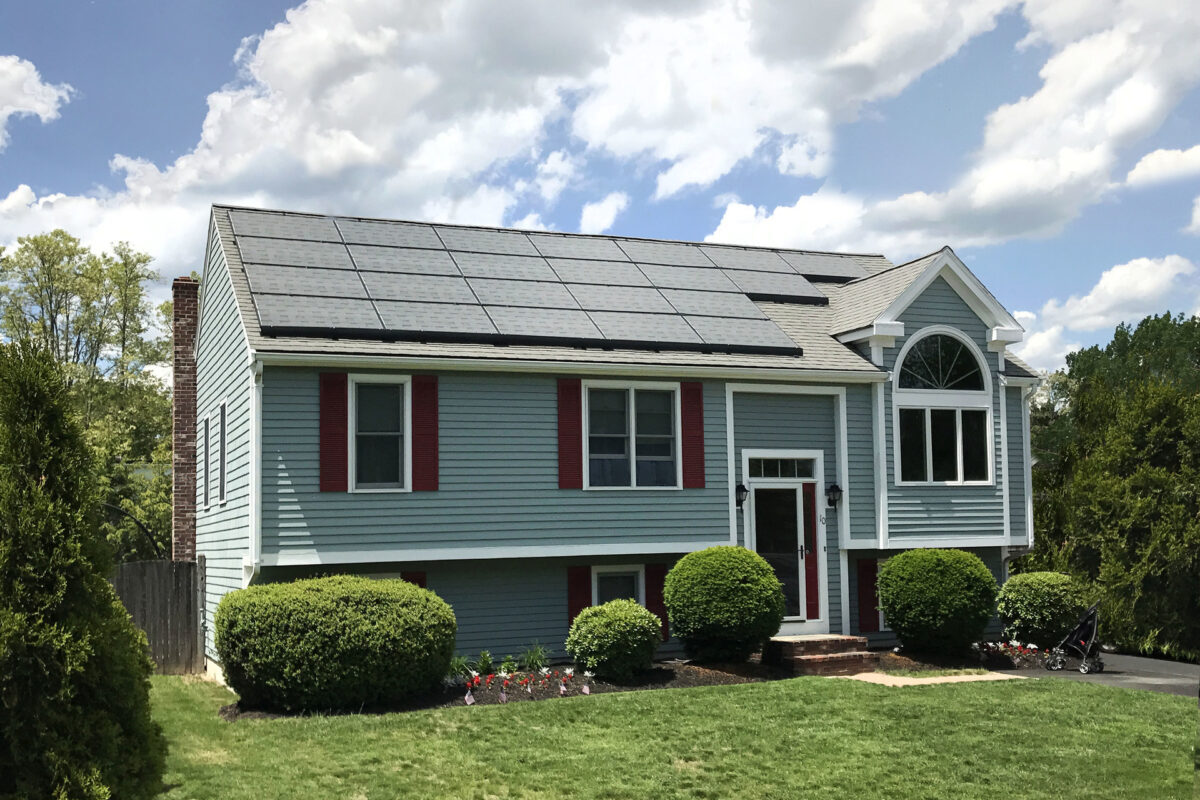Editor’s note: On August 15, pv magazine USA ran an op-ed by Tony Clifford of Standard Solar, arguing against the Section 201 petition which is currently being investigated by the ITC. Today we bring you a response from SolarWorld Americas, which joined this petition.
by Juergen Stein, CEO of SolarWorld Americas Inc.
 Solar energy should be a success story for U.S. solar-panel manufacturing, an industry that this country pioneered over decades. Instead, an overwhelming crush of undersold imports has all but snuffed out the industry, an American tragedy that no observer can deny has unfolded since 2012.
Solar energy should be a success story for U.S. solar-panel manufacturing, an industry that this country pioneered over decades. Instead, an overwhelming crush of undersold imports has all but snuffed out the industry, an American tragedy that no observer can deny has unfolded since 2012.
From 2012 to 2016, imports swelled five times over, capturing virtually all of the 350 percent increase in U.S. demand. In 2016 alone, imports grew a staggering 50 percent – to $7 billion – as foreign producers contributed to massive global overcapacity and seized the U.S. market to dump their products.
It’s no surprise, then, that this torrent of imports shredded the U.S. manufacturing industry’s capacity utilization, prices and financial performance in 2016.
From 2012 to 2016, nearly 30 U.S. manufacturers were forced to shut their doors, casting off hundreds of line workers, specialized engineers and Ph.D. scientists. These laid-off workers were real people with real careers, not potentialities or hypotheticals.
As a result of this onslaught, only two significant domestic producers were able to hang on long enough to bring the solar industry’s latest trade action, called a Section 201 case: Suniva Inc., which is bankrupt, and SolarWorld Americas Inc., which has suffered layoffs but still remains.
Unfortunately, solar installers and developers see the case as a potential threat to the continued rapid expansion of their businesses, despite the fact that U.S. solar-panel manufacturing is, in starkly real terms, fighting for its very survival.
Meanwhile, a third component of the struggle has driven a wedge in the U.S. industry: Chinese and other Asian manufacturers hope we fixate on short-term pricing, because they have been relentlessly committed to the long-term goal of controlling the world solar manufacturing industry.
From the standpoint of fair trade, it hasn’t been a pretty picture.
In two comprehensive investigations, the U.S. government found that the Chinese government had sponsored its solar-manufacturing industry’s export drive under that command government’s Five Year Plan. The Chinese government showered its industry with export-oriented subsidies, which the U.S. government two times determined to be illegal. These producers also were found to be selling into the U.S. market at prices below production costs – an illegal practice called dumping.
Resulting duties to curb the predatory effects of this import campaign helped the U.S. solar manufacturing industry for a time within the 2014-2015 period.
But then Big China Solar, armed with state-supplied subsidized financing, built up operations in Southeast Asia to evade the tariffs. Now the surge of U.S.-bound imports flows from Malaysia, the Philippines, Thailand, Vietnam and other countries. Meantime, imports from China increased some 732 percent from 2012 to 2016. These developments, combined with China slowing its purchase of solar, once again crashed U.S. domestic prices in mid-2016, causing still more U.S. bankruptcies.
Sound unfair? That’s only the half of it.
Though the Chinese and other exporters enjoy access to every corner of the U.S. solar marketplace, including U.S. military bases as well as taxpayer-funded incentives, the Chinese market is closed to competition from imports. In the current trade case, even Chinese producers admit it.
So far, this asymmetrical trade aggression is winning the day.
While China and other nations are building up their technological production toward energy independence, the United States is on the brink of losing its own industry. The nation risks depending on foreign countries not only for fossil fuels but clean-energy technology as well.
Considering the growth of the U.S. solar market, the domestic manufacturing industry should be much bigger – and it still can be. But without relief from imports, the industry will disappear – and gone with it will be decades of manufacturing expertise, R&D drive and production know-how.
Everyone should want prices to steadily decline over time, but not when import prices are decoupled from the costs of production – or illegally subsidized by foreign governments. Indeed, domestic manufacturers have relentlessly reduced their costs and pricing down to 10 percent to 15 percent of total installation costs. Where are similar drives to reduce the cost components of the other 85 percent to 90 percent of the total?
Some opponents of the Section 201 case have alleged that U.S. manufacturers are somehow to blame for their own U.S. decline. But this line of argument merely amounts to blaming the victim.
Opponents also contend that relief from imports could cause layoffs in the installation business. The same corner of the industry predicted similar job-loss fallout from the first two cases – losses that never materialized as the U.S. market kept right on growing.
Indeed, U.S. demand increased from 3.4 gigawatts in 2012 to 14.8 GW in 2016. Solar installations grew nearly 100 percent from 2015 to 2016, marking the 17th straight year of growth. Last year, solar became the fastest-growing energy source nationwide.
But undersold imports have captured that growth.
The future should be bright for both installation and manufacturing segments, as analysts forecast robust growth to continue through 2018 and beyond.
What do opponents of the trade case imagine would happen if the last U.S. manufacturers disappeared? What would replace the comparatively high-wage, high-benefit employment of yet another U.S. manufacturing industry? Would the installation industry become more vulnerable to the Chinese government’s control of pricing? Would the world industry continue to develop technologically? Would the United States truly make progress toward energy independence?
The sun shines bountifully across this vast nation. The U.S. and global solar markets are strong and growing. With a domestic solar-panel manufacturing industry, the possibilities for gains in energy independence are spectacular.
But to realize these possibilities, we must take a stand against China and other Asian countries from unfairly taking over yet another U.S. high-tech industry – and in support of American manufacturing, R&D and innovation.
The views and opinions expressed in this article are the author’s own, and do not necessarily reflect those held by pv magazine.
This content is protected by copyright and may not be reused. If you want to cooperate with us and would like to reuse some of our content, please contact: editors@pv-magazine.com.








First of all, the claim of 30 US manufacturers having gone bankrupt is not actually evidence of anything. In the US, funding for solar companies relied on gimmicks – cleaved silicon wafers, epi on porous substrates, solar tubes, and in Suniva’s case, ion implantation using low throughput semiconductor tools. The bulk of US companies trying to enter the PV manufacturing arena relied on gimmick/unproven/far fetched technologies in order to raise money. It is not surprising, then, that so many failed to scale. Furthermore, many of these companies, including SolarWorld and Suniva, have benefitted from government subsidies in various forms including grants and, in SolarWorld’s case, cheap facilities.
“Unfortunately, solar installers and developers see the case as a potential threat to the continued rapid expansion of their businesses…”
Can the author address why solar developers feel this way? Can he present an analysis showing how a $0.40/W increase will NOT reduce project demand by increasing the price of solar electricity (especially for utility and C&I projects) compared to alternatives?
Should we put floor prices on shoes and clothes too? Why pick out one product from the entire economy to protect?
This is the last time I read PV Magazine! You don’t have a magazine without us (your 100,000+ industry workers) Why undermine everything we are trying to accomplish.
Really? Because we published the perspective of a section of the solar industry that is not the majority opinion (as part of publishing opposing op-eds)? If that is the case, we’re sad to see you go but we are not going to stop doing our jobs.
Also, it is 230,000+ solar industry workers – including a few thousand in cell and module manufacturing – as of last count by Solar Foundation.
In what industry, and in what period, have doubling the prices of anything had a positive impact on any market?
Solar World, which isn’t even an American owned company, is a petitioner in a case that will literally kill tens of thousands of high paying American jobs.
Garbage garbage garbage. This is the equivalent of David Brooks’ reviled sandwich article in NYT
you’re just a shit Utility Dive
Thanks for your comment. We’re big fans of Utility Dive, and they do great work covering regulatory issues, particularly at the state level. However, we have a slightly different model and focus. Utility Dive covers the entire electric utility industry, not just solar, and so is not covering the 201 case in the detail that we are. Additionally, our experience from the upstream sector in Germany and internationally allows us greater insight into manufacturing, something that Utility Dive doesn’t cover. So you probably wouldn’t read a SolarWorld op-ed there.
Also, please note for future reference that abusive and/or uninformative comments are often deleted, except as in this case where they provide an opportunity for our staff to provide additional relevant information.
cool thanks for censoring dissenting opinions to your controversial opinion piece.
Abusive and/or uninformative comments will not be published. Thanks.
Shame on Solar World and Sunvia. Just understand that this will not work as they would like, it will only tank the bulk of the US Solar Industry. Also know that we (I am an EPC with over 40 tears of professional experience in the solar industry) will NOT purchase modules from SolarWorld or Sunvia in ANY case. We do NOT support any supplier who acts against the interests of a thriving and growing US Solar Market.
Questions:
1. Author Stein says China is selling modules “…at below production cost”… How much below?
2. Why have Suniva and SolarWorld chosen the level of tariff they have asked for? (To those of us who need to purchase modules, it is nearly a doubling of the cost).
3. What is the exact relationship of 1. and 2.?
4. Now that there are a half-dozen countries selling competitive panels products into the U.S. in the +/- $.40/W range, how can all that activity be attributed to “Big China”?